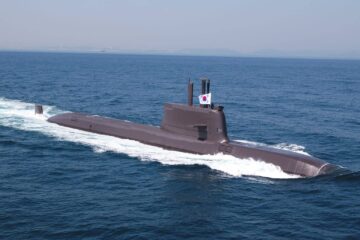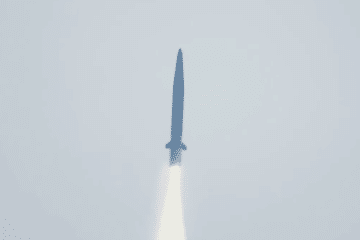South Korea’s largest foreign deployment, the Somali Sea Escort Task Group or Cheonghae Unit, is the pride of the Republic of Korea (ROK) Navy. The unit has played central roles in some of the nation’s most high profile military operations.
On January 27, 35 service members on board the ROKS Choe Yeong, which relieved the ROKS Chungmugong Yi Sun-sin as the flagship of the unit in November, tested positive for COVID-19. This is the second COVID-19 outbreak that the unit has faced in the past year. The recent series of outbreaks have put the future of the unit during the COVID-19 pandemic in question.
Mission & Unit Composition
The Cheonghae Unit was formed on March 13, 2009. Its primary mission is to protect South Korean trade in the seas surrounding Somalia through which 29% of all the nation’s trade transits each year. The unit is composed of a Chungmugong Yi Sun-sin-class destroyer, Westland Super Lynx helicopter, detachment of marines, an unspecified number of personnel from the Naval Special Warfare Flotilla (WARFLOT) and 2-3 members of the Sea Salvage and Rescue Unit. The six-ship Chungmugong Yi Sun-sin-class, also known as DDH-II (or KDX-II), is the second class of destroyers developed for the ROK Navy’s KDX program. Commissioned between 2003 and 2008, the ships have a maximum displacement of 5,500 tons, a crew of 230 personnel, and a top speed of 30 kts. The ships are regarded as marking a watershed moment for the ROK Navy in its plans to build a blue-water fleet, being the first destroyers to displace over 5,000 tons. Moreover, they were the first ships in the ROK Navy to incorporate stealth characteristics into their design, with a radar cross section similar to that of the 1,220 ton Pohang-class corvette.
Operational History
The Cheonghae Unit has led some of South Korea’s most high-profile military operations. On January 21, 2011, During the “Operation Dawn of Gulf of Aden”, WARFLOT operatives deployed from the ROKS Choe Young recaptured the Samho Jewelry, a Norwegian-owned and South Korean-operated chemical tanker that had been seized by Somali pirates six days before. The mission was unanimously praised by domestic observers; there were no friendly deaths, with all 21 hostages being rescued. The unit and its members quickly became national heroes.
Since then, the unit has been involved in several overseas operations, evacuating South Korean citizens from Libya in 2011 and Yemen in 2014, in addition to conducting routine anti-piracy operations. Since 2020, the unit has also been regularly deployed to the Strait of Hormuz, with the most notable deployment occurring in 2021 as a response to the Iranian seizure of the South Korean oil tanker, Hankuk Chemi.
COVID-19 Outbreak
The Cheonghae Unit was on its 36th deployment when the most recent COVID-19 outbreak crippled the ROKS Choe Young. The 35 confirmed cases so far constitute 11.5% of its 304 member crew. Twelve of those infected are showing mild symptoms, with the rest being asymptomatic. All crew members except the essential personnel required to operate the ship have been put in quarantine in a hotel in Oman.
“We are not sure how the outbreak occurred,” The results of our contact tracing show that the crew did not interact with locals while in port.”
Spokesperson for the South Korean Joint Chiefs of Staff
The South Korean government will face many questions in the coming weeks regarding the incident. This is the second outbreak the unit has faced in the past year, with the ROKS Munmu the Great also having suffered an outbreak during the unit’s 34th deployment in July last year. During the first outbreak, 90% of the crew, 272 personnel, tested positive for COVID-19. Painful memories of the first outbreak still linger in the minds of many South Koreans. They will be demanding answers as to how the nation’s most famous unit was crippled for a second time by COVID-19 in just over six months.






